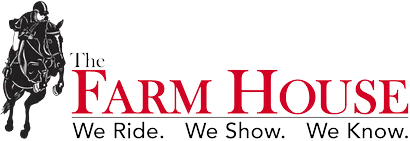
How Tariffs Impact US Equestrians: Beyond the Horse
Michelle Drum
Introduction
With all the talk about tariffs right now, it’s a good time to take a deep dive into what tariffs are and how they will affect equestrians worldwide. We feel it’s important to be transparent about pricing so our shoppers understand why some of their favorite items cost more.
Tariffs, taxes imposed on imported goods, are a tool governments use to influence trade. Recent changes in US tariff policy are starting to affect various sectors, and the equestrian world is no exception. This article will explore how tariffs on apparel, tack, metal goods, and the importation of horses, particularly from Europe, can affect equestrians in the United States.
Tariffs on Apparel: A Rider's Wardrobe
The equestrian lifestyle requires specialized clothing. Breeches, riding boots, show jackets, and helmets are often imported. Tariffs on apparel can increase the prices of these essential items. While many apparel companies are based in the United States, many outsource manufacturing or import fabrics from around the globe.
- Riders may face higher costs for everyday training wear and competition attire.
- Budget-conscious equestrians might opt for less expensive, budget-friendly alternatives.
Tariffs on Metal Goods: Beyond Bits and Spurs
Equestrians rely on various metal goods, from bits and spurs to stable equipment and horse trailers. Tariffs on steel and aluminum can have a ripple effect.
- Increased prices for essential equipment like horseshoes, farrier tools, stable fixtures, and even things like screw eyes, snaps, and cross ties.
- Higher costs for manufacturing horse trailers make transportation more expensive.
- The potential strain on related industries, such as farriers, veterinarians, and construction.
A few of our brands (Pro-Choice, Intrepid, etc.) expect 7-23% increases across their inventories.
Tariffs on Leather Goods, Tack & Equipment
Without leather goods, I’m not sure where many of us would be as equestrians. Halters, saddles, bridles, so much of our sport relies on a variety of leather goods, which tariffs are already having an effect on.
- Increased prices for imported European saddles
- Surcharges on leather goods from Europe and India
- Frugal equestrians will likely seek resources from lower-quality leather or synthetic options.
Some of our premium quality leather brands are already looking at increases of 10% or more due to tariffs. Many are waiting to see how things shake out before implementing increases, and others are implementing increases immediately.
Tariffs on Horse Importation: A Global Market
The United States is a significant market for high-quality European horses, particularly for competition in disciplines like dressage and show jumping. Tariffs on horse imports from Europe can reshape the equestrian landscape.
- Increased costs for American buyers seeking to purchase European horses.
- Reduced competitiveness for US riders who rely on imported talent.
- Potential shift in the market towards domestic breeding and sales.
- The temporary import of horses for competitions may also be affected, with bonds required.
According to the American Horse Council’s recent article "Tariffs: The Horse Industry's Journey into the Great Unknown," The following things should be strongly considered when importing a horse:
- Increased Costs and Uncertainty: Tariffs introduce new costs and considerable uncertainty for horse owners and businesses involved in cross-border equine trade. They also vary by country.
- Temporary vs. Permanent Imports: The article differentiates between temporary and permanent imports. While temporary imports (for competition, breeding, etc.) typically don't incur tariffs, they may require a refundable bond (Temporary Import Bond - TIB) or an ATA Carnet (an international customs document). If a temporarily imported horse is sold in the U.S., full tariffs may become due.
- Tariff Calculation: Tariffs are calculated based on the declared value of the horse at the time of import, not necessarily the purchase price. Importers must provide documentation to support this valuation.
- Payment and Frequency: Tariffs are paid each time a horse is imported. Customs brokers typically facilitate this payment to the U.S. Customs and Border Protection (CBP).
- Exemptions and Specifics: While some categories, like purebred breeding animals, historically had zero tariffs, the new regulations suggest all categories of horses might be eligible for tariffs. Canada and Mexico are noted as having exemptions for some horse movements under existing trade agreements.
- Importance of Due Diligence: The article strongly advises consulting with licensed import brokers or trade authorities for the most current information, as tariff regulations are dynamic. It also emphasizes that tariffs are separate from health documents and quarantine procedures, which remain essential for all horse movements.
The Broader Effects on US Equestrians
The combined effect of these tariffs can create a challenging environment for US equestrians.
- Increased Costs: From everyday riding gear to competition horses, the cost of participating in equestrian sports may rise.
- Market Dynamics: The balance between domestic and international trade could shift, affecting breeding, sales, and competition.
- Accessibility: Higher prices may make equestrian activities less accessible to new participants and those with budget constraints.
After speaking to all of our vendors, they have all made it increasingly clear they will absorb as much of the financial impact as possible. Accordingly, we are expecting to see price increases throughout the year, and have already seen some bigger brands raising prices to offset the cost of importing and exporting goods.
For US equestrians, tariffs on apparel, equipment, metal goods, and horse imports can lead to increased costs, market shifts, and potential challenges to the accessibility of the sport. It should be noted that many of the companies we trade with are trying to absorb as much of the tariff increases as possible.
We are doing everything we can to source these items as economically as possible to keep this sport affordable for everyone. If you find something you need is out of reach, ask us! We may be able to locate something comparable from a different vendor.

1 comment
Thank you for this!